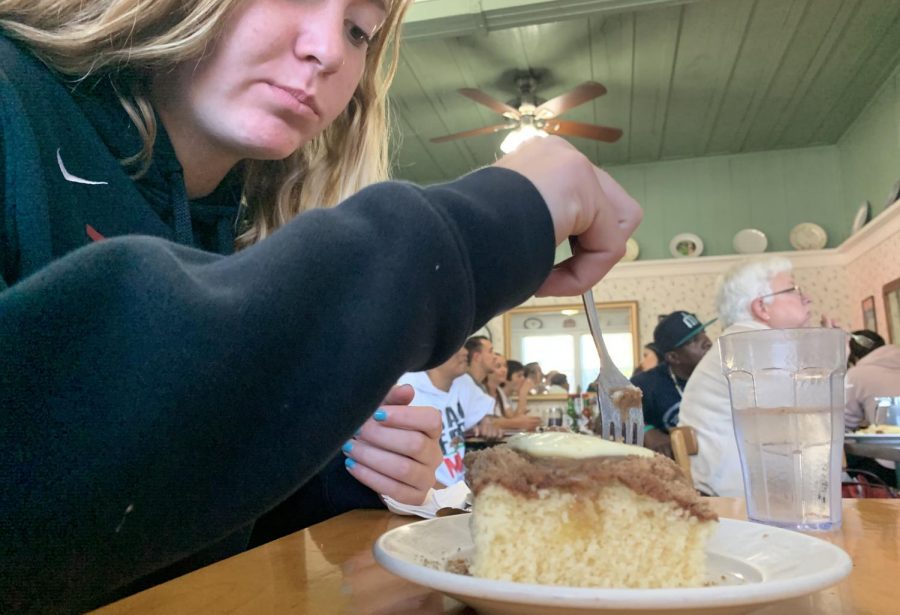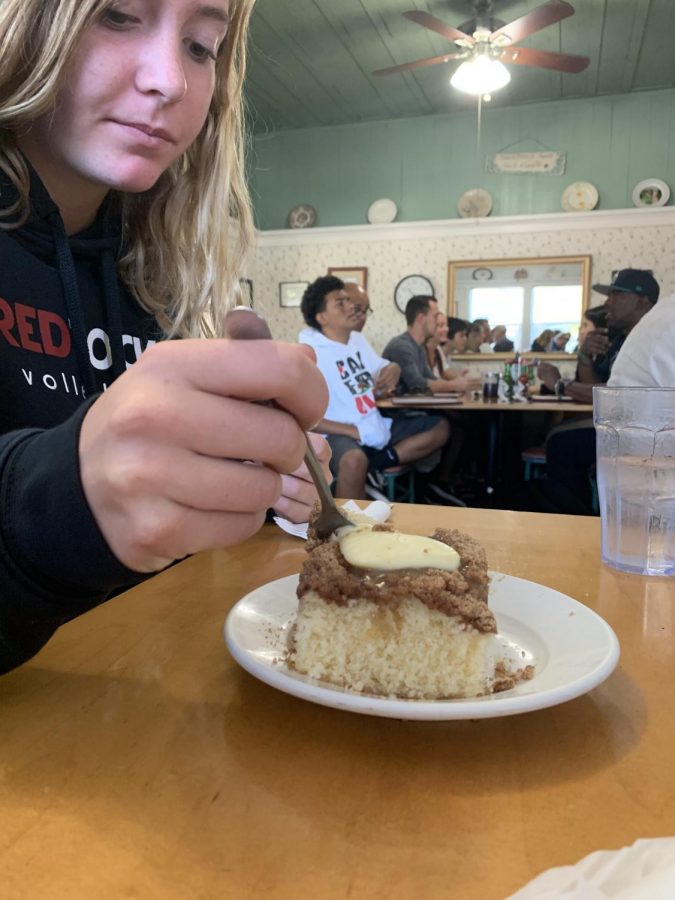Curriculum Should Include Healthy Eating Habits
December 2, 2019
During brunch and lunch, it is not uncommon to see mobs of students swarming the cafeteria like farmyard animals at feeding time. Exiting the cafeteria with armfuls of sugary muffins or piles of pizza bread, students feast on nutritionally suspect foods multiple times a day, 5-days-a-week, for much of the school year.
Statistics provided by Acalanes Union High School District’s food service coordinator Angel Clifford show that students spend upwards of $1.2 million on cafeteria food each school year.
While I commend the district for last year’s implementation of the salad bar, the current dietary shortcomings are less about the cafeteria options and more about the choices being made by those who step up to its brunch and lunch-line counter.
Clifford said that pizza and the burrito bar are the most popular offerings. Since the offerings are dictated by sales, the cafeteria menu is filled with low-nutrient density foods like these.
It saddens me that few students purchase an apple or banana with their double serving of chicken chow mein and tater tots.
My intent is not to shame students who enjoy food in the cafeteria. A bagel and cream cheese once a week or a slice of pizza every now and then is not a crime. And, we have cafeterias for a reason: to provide a convenient way for students to fuel themselves through the rigors of a school day.
However, binging on “empty” calorie meals 5 days-a-week for 4 quarters of the school year takes its toll.
A survey of 1000 students from several schools “found that that those who regularly ate the school lunch were 29 percent more likely to be obese,” according to the New York Times.
The root cause of teenage obesity is the mindset students have towards food.
The problem I see with the daily meal time melee is the habits students have created with their consumption, which are part of a larger campus culture. It is difficult to find a student who has never tasted the cafeteria coffee cake or visited the vending machines.
Kids have a hard time understanding that the nachos or soda they consume habitually will eventually lead to long-term health problems, like obesity.
While there are plenty of kids around the globe who are desperately in need of calories however they can get them, most of the flabby frequenters I observe greedily gobbling down their sugar-filled brunch treats in the cafeteria are not among them.
2 out of 10 American children are obese, according to the Center for Disease Control and Prevention.
The solution to this problem is not just a healthier set of options, but more importantly, additional instruction on what constitutes a healthy diet.
Discussing the food pyramid for a block period in Human and Social Development sophomore year is not enough to convey the consequences of poor eating habits. The Center for Ecoliteracy explains that less than 1/3 of schools provide nutritional education “related to influencing students’ motivation, attitudes, and eating behaviors.”
Freshman Living Earth, or any biology-related science classes for that matter, should have an extensive unit about good nutrition. The benefits go beyond just physical health.
According to the University of Minnesota’s School of Public Health, comprehensive nutritional education has not only been linked to decreased Body Mass Indexes and waist circumferences in elementary school students who received lengthy nutritional education, but it also resulted in higher standardized test scores.
Ingraining healthy habits through a more comprehensive curriculum that includes an emphasis on improving nutrition will pay off for students.
According to U.S. News, Monarch High School of Colorado included in its cooking class the discussion of macronutrients. As a result, students reported greater confidence about making healthy dietary choices on their own.
Adding a supplemental unit about nutrition and teaching students habits that will lengthen their lifespan should become a priority of the district.
We need to put down the chocolate muffin and stop going to Taco Bell every other day. Instead, we should pick up a fork filled with fruits and vegetables.




